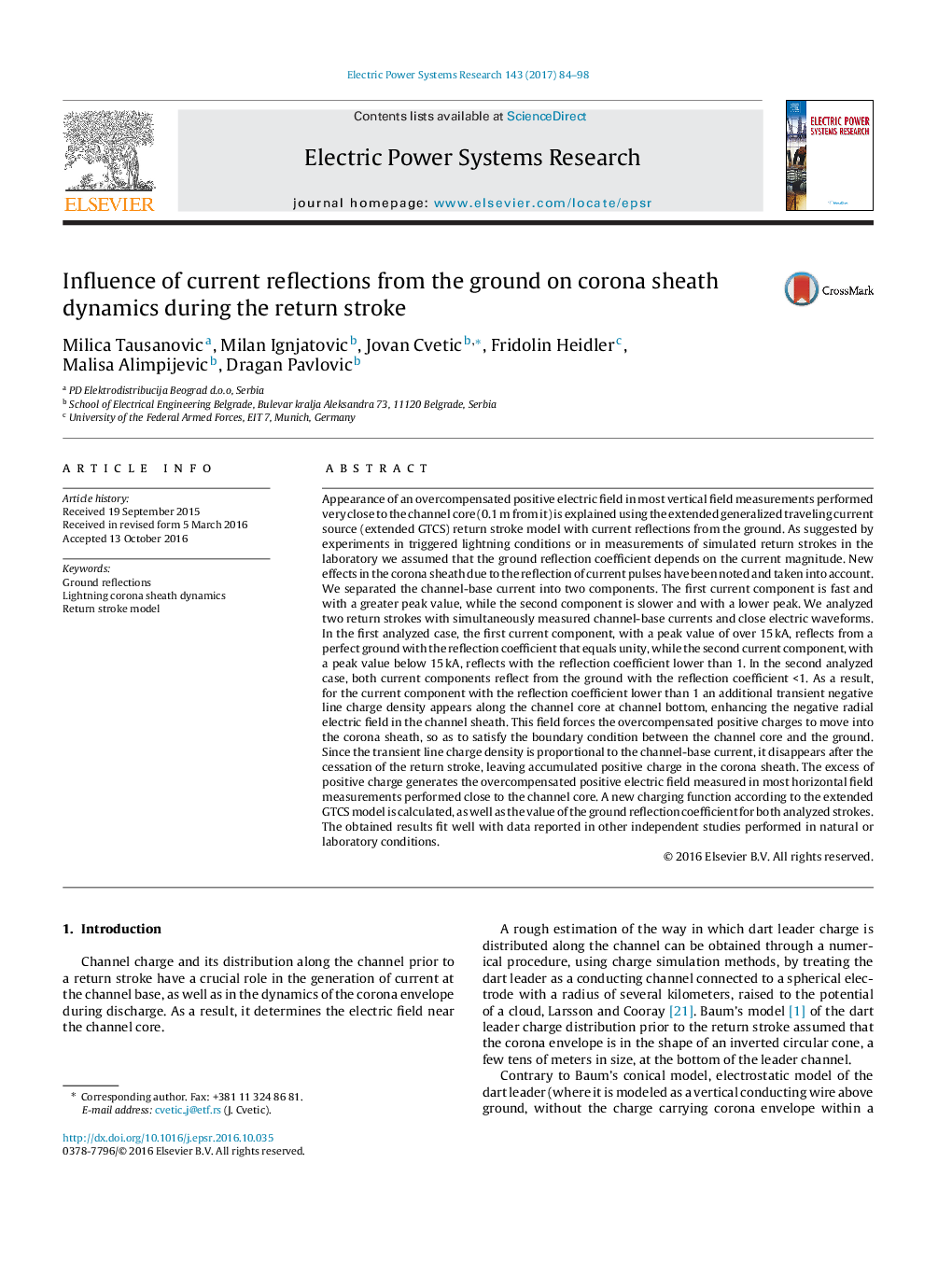| Article ID | Journal | Published Year | Pages | File Type |
|---|---|---|---|---|
| 5001213 | Electric Power Systems Research | 2017 | 15 Pages |
Abstract
Appearance of an overcompensated positive electric field in most vertical field measurements performed very close to the channel core (0.1Â m from it) is explained using the extended generalized traveling current source (extended GTCS) return stroke model with current reflections from the ground. As suggested by experiments in triggered lightning conditions or in measurements of simulated return strokes in the laboratory we assumed that the ground reflection coefficient depends on the current magnitude. New effects in the corona sheath due to the reflection of current pulses have been noted and taken into account. We separated the channel-base current into two components. The first current component is fast and with a greater peak value, while the second component is slower and with a lower peak. We analyzed two return strokes with simultaneously measured channel-base currents and close electric waveforms. In the first analyzed case, the first current component, with a peak value of over 15Â kA, reflects from a perfect ground with the reflection coefficient that equals unity, while the second current component, with a peak value below 15Â kA, reflects with the reflection coefficient lower than 1. In the second analyzed case, both current components reflect from the ground with the reflection coefficient <1. As a result, for the current component with the reflection coefficient lower than 1 an additional transient negative line charge density appears along the channel core at channel bottom, enhancing the negative radial electric field in the channel sheath. This field forces the overcompensated positive charges to move into the corona sheath, so as to satisfy the boundary condition between the channel core and the ground. Since the transient line charge density is proportional to the channel-base current, it disappears after the cessation of the return stroke, leaving accumulated positive charge in the corona sheath. The excess of positive charge generates the overcompensated positive electric field measured in most horizontal field measurements performed close to the channel core. A new charging function according to the extended GTCS model is calculated, as well as the value of the ground reflection coefficient for both analyzed strokes. The obtained results fit well with data reported in other independent studies performed in natural or laboratory conditions.
Related Topics
Physical Sciences and Engineering
Energy
Energy Engineering and Power Technology
Authors
Milica Tausanovic, Milan Ignjatovic, Jovan Cvetic, Fridolin Heidler, Malisa Alimpijevic, Dragan Pavlovic,
